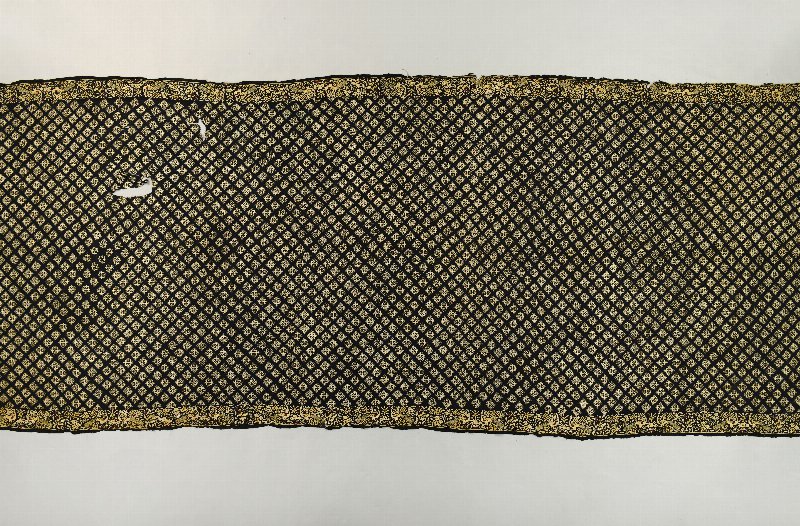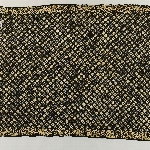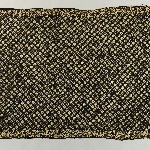Sari
A574
From: India | Mumbai | China (uncertain)
Curatorial Section: Asian
| Native Name | Sari |
| Object Number | A574 |
| Current Location | Collections Storage |
| Culture | Indian | Parsi |
| Provenience | India | Mumbai | China (uncertain) |
| Period | 20th Century | 19th Century |
| Date Made | Late 19th Century - Early 20th Century |
| Section | Asian |
| Materials | Silk |
| Technique | Embroidered | Dyed | Woven |
| Iconography | Peacock | Bird | Floral |
| Description | A fully-embroidered sari (akho garo) with a field design of a diagonal grid composed of repeating diamonds. Each diamond contains the same symmetrical arrangement of four floral motifs and rays of linework emitting from them to fill out the diamond shape. The sari being of black mulberry silk in a leno-dent gauze (Chinese: zhī luó 織羅; Gujarati: sali) weave and embroidered primarily in satin stitch (with some stem stitch) using twisted two-ply silk embroidery threads identifies it as a sari for the Parsi market (Gujarati: garo, singluar; gara, plural), likely made either in China or by Chinese embroiderers in Bombay, present-day Mumbai, where there has historically been a significant Parsi population and from where this sari was collected. The Parsi market for Chinese embroideries emerged from the involvement of Parsi merchants in the so-called 'China trade' of Indian opium and cotton for Chinese tea exported to Britain in the 19th century. The border design of peacocks or other long-tailed birds surrounded by a dense array floral motifs was popular in this market. The delicate sprigs of flowers arranged relatively naturalistically draw from Chinese embroidery motifs, distinguishing the designs from the more regularized repeats of the bird-and-flower borders commonly found on embroideries produced in Gujarat for domestic markets during this period (compare with object number 43-12-60). Black silk. Semi sheer. Beige flower pattern in blocks formed in rows on the black background. Border embroidered in yellow, beige and red peacocks. |
| Length | 520.7 cm |
| Width | 111.76 cm |
| Credit Line | Purchased from F. P. Bhumgara & Company, 1904 |
| Other Number | 88-16-33 - Found in Collection Number |
Report problems and issues to digitalmedia@pennmuseum.org.






